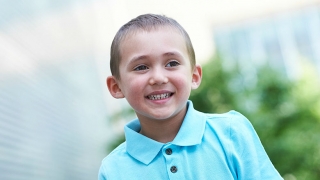Juvenile Myelomonocytic Leukemia (JMML)
What is juvenile myelomonocytic leukemia?
Juvenile myelomonocytic leukemia (JMML) is a rare cancer of the blood that affects young children. JMML happens when types of white blood cells called monocytes and myelocytes do not mature normally. JMML can happen spontaneously (by chance) or can be associated with other genetic disorders in some children.
Signs and symptoms
The most common signs and symptoms of JMML in children are:
- Anemia. Anemia occurs when normal red blood cells can't be produced because the bone marrow is overcrowded by leukemia cells. The anemic child may be more tired, take more naps, look pale, and her heart may be racing. The number of red blood cells on a blood count (expressed as "hemoglobin" or "hematocrit") will be below normal.
- Bleeding and/or bruising. When the bone marrow cannot produce enough platelets, bleeding can occur, especially when the platelet numbers are less than 10-20,000/mm3. Low platelets can cause a child to bruise or bleed more easily.
- Bone and joint pain. Pain in bones and joints is usually a result of the bone marrow being crowded with leukemic blasts. This is often mistaken for "growing pains."
- Recurrent fevers/infections. The child with leukemia often shows non-specific symptoms of infection such as fever and fatigue. Although the blood count of a child with leukemia may show a high number of white blood cells, these cells are immature and do not normally fight infection. As a result, the child may have difficulty recovering from an ordinary childhood infection or may develop unusual infections.
- Abdominal pain. Leukemia cells can collect in the kidneys, liver and spleen, causing enlargement of these organs which can cause pain in the abdomen. This pain may lead to loss of appetite and weight loss.
- Swollen lymph nodes. Lymph nodes filter the blood. Leukemia cells often collect in the nodes, causing swelling. Swelling occurs in lymph nodes in the neck, under the arms, in the groin and chest. Sometimes it is difficult to distinguish the lymph nodes of leukemia from those that are a normal part of the body's response to infection or allergy.
- Difficulty breathing. In leukemia, cells can clump together in the thymus a gland under the breastbone and around the throat. This mass of cells can cause difficulty breathing. Any wheezing, coughing and/or labored or painful breathing requires immediate medical attention.
Diagnosis
In addition to a complete medical history and physical examination, diagnostic procedures for juvenile myelomonocytic leukemia may include:
- Blood tests and physical examination
- Bone marrow aspiration and/or biopsy. A procedure that involves taking a small amount of bone marrow fluid (aspiration) and/or solid bone marrow tissue (core biopsy), usually from the hip bones, to be examined for the number, size, and maturity of blood cells and/or abnormal cells.
- Genetic mutation testing. Your child’s doctor may recommend testing of the bone marrow or blood for genetic changes associated with JMML. Some genetic changes are also associated with underlying conditions, such as Noonan and other syndromes.
Treatment
The only known successful treatment for JMML is bone marrow transplantation (hematopoietic stem cell transplantation). Children may also be treated with chemotherapy prior to a bone marrow transplant.











